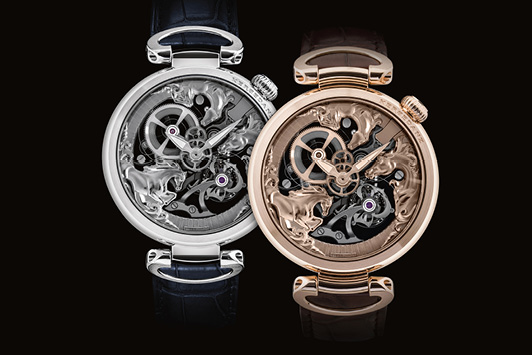
“The genius of the highest level of bespoke is that it totally reflects your personality. It is the ultimate in luxury,” says Thierry Chaunu, president and managing partner at boutique marketing agency BeauGeste. Chaunu, whose New York-based company works with luxury brands in North America, is referring specifically to bespoke watchmaking; one of his clients is Swiss watch company Kerbedanz, where, he says, “we design for MIPs — most important personalities — rather than VIPs — very important people.”
Stressing the distinction between custom design and bespoke, Chaunu explains that the former will incorporate a person’s tastes and passions, but with a tweak in the design, a watch customized for one person becomes that of another.
“Not only are bespoke watches exceptionally designed, you are the only person to understand it,” he says. “Another person can wear the watch, but the meaning is lost. Bespoke is a state of mind.”
Who’s ordering?
One criterion in particular sets this market apart: affluence. The customer profile is the same in the US, Europe, Asia and Latin America.
“People who order bespoke watches already have everything — they own watches from the big houses which have been made by skilled artisans, but the craftsmanship, while still high, is semi-industrial,” points out Chaunu, whose career has spanned executive positions at prestige watch companies.
Another characteristic of the bespoke watch market is that it’s predominantly male.
“Most of the executives in Switzerland are men who think that these watches are only for men, because they love mechanical precision instruments or collect antique cars. Then they offhandedly design something for women,” says Chaunu, who finds these preconceived ideas condescending.
“When it comes to the bespoke market, the watch becomes a bracelet that tells time,” he continues. He recognizes that women want the style and the jewels, and that often the movement comes second. However, it may depend on how one asks the question.
“In my experience, when you start having the conversation, you find out that women are extremely interested in the mechanical precision,” he says. The women’s market represents an untapped opportunity for manufacturers, according to Chaunu. Still, he acknowledges that tourbillons, because of their size, make it more complicated to design a watch for women with a sophisticated movement, especially for Asian women, who tend to have smaller wrists.
An essential component of bespoke watches, the tourbillon — which watchmaker Abraham-Louis Brequet designed and patented around the turn of the 19th century — rotates the balance wheel to counter the effect of gravity. Kerbedanz has introduced the Maximus, the largest known tourbillon for a wristwatch.
Finding the right match
Sales of bespoke watches are mostly by word of mouth. However, Chaunu occasionally presents at trunk shows that prestige jewelers arrange for their top clients.
“It is an opportunity to identify the right candidate for bespoke,” he says, recalling that one attendee shared that he had images of owls displayed on his yacht and on the gates flanking his mansion. Chaunu contacted a designer, and after some rough drafts, the client joined the rarefied ranks of bespoke watch owners with his owl-themed timepiece.
While bespoke watchmakers focus almost entirely on producing unique pieces, economic imperatives often necessitate the creation of limited-edition collections. Adhering to the same high manufacturing standards, these less personalized watches retail for six figures and attract a wider, though still select, audience.
‘True luxury, not mass luxury’
In a world dominated by computers, Chaunu remains optimistic that the bespoke watch market will continue to grow. He compares it to the market for fine art, which extols originality. And he feels the luxury market has come full circle.
“Now we are back at the beginning, when the then-small shops like Louis Vuitton and Hermès would make one bag for one customer, just as with bespoke watches,” he says. “People still appreciate true luxury instead of mass luxury.”
Image: 3 Horses
Article from the Rapaport Magazine - March 2018. To subscribe click here.